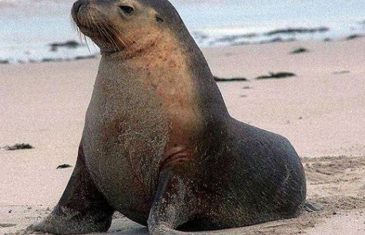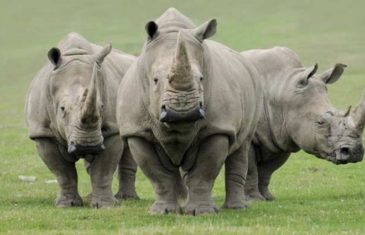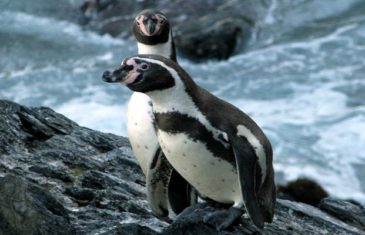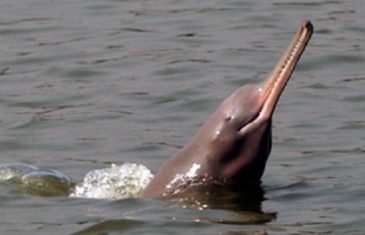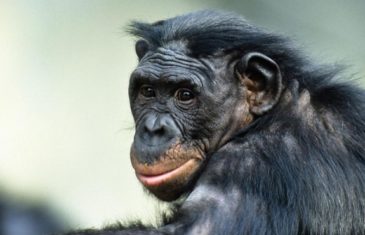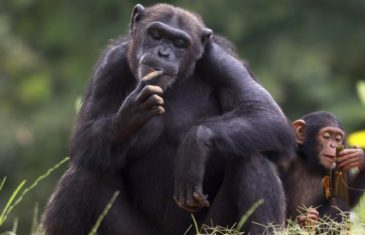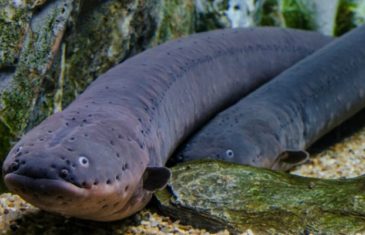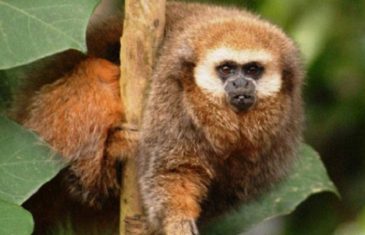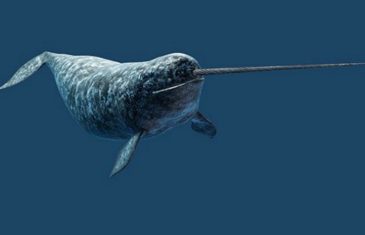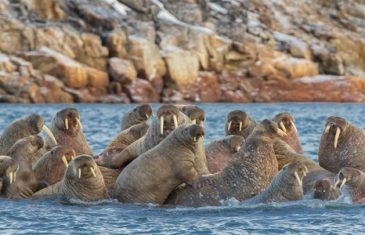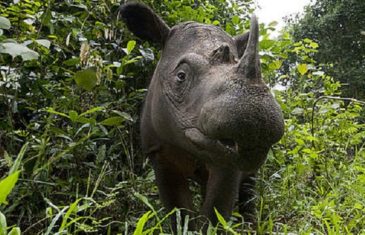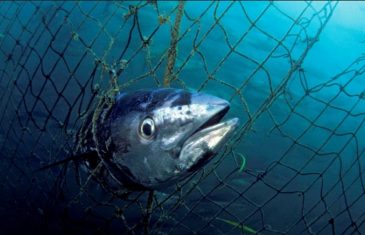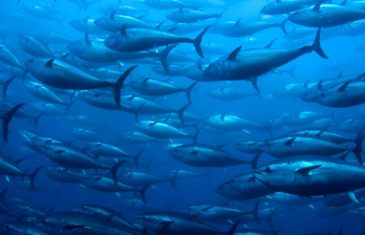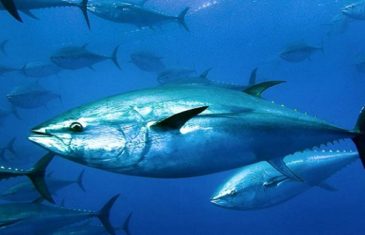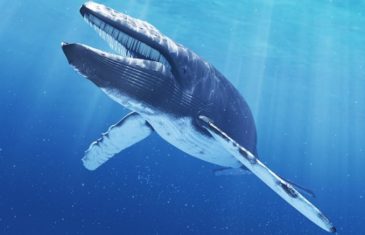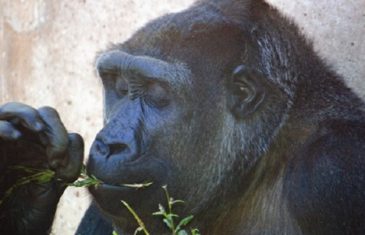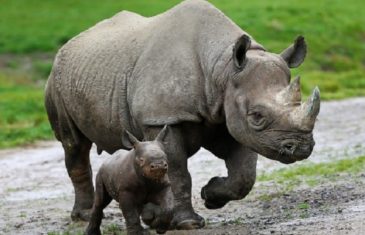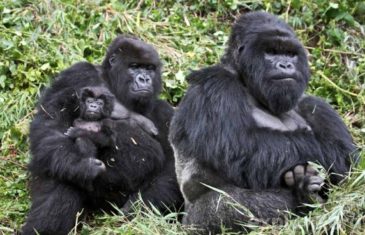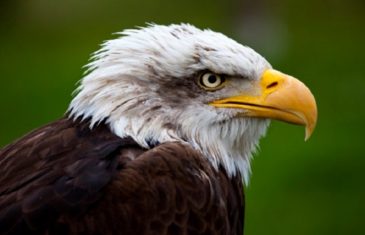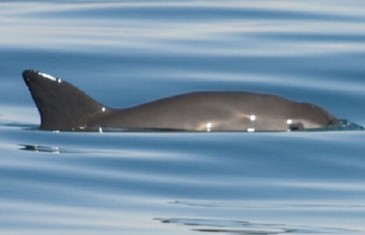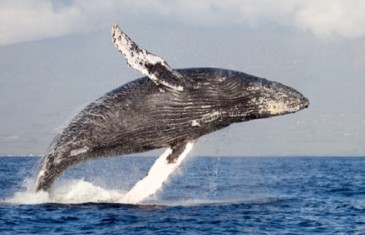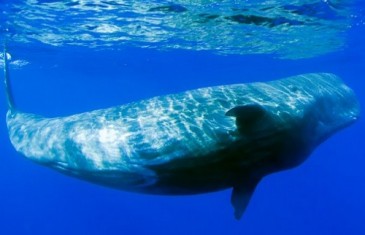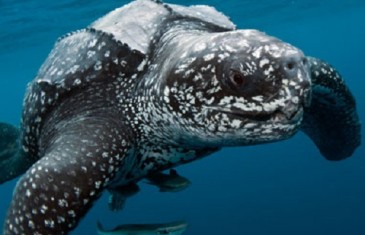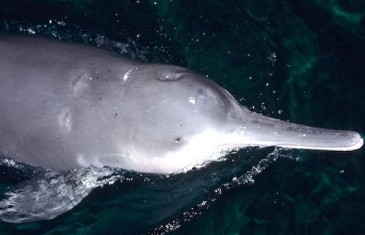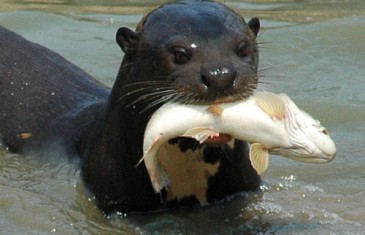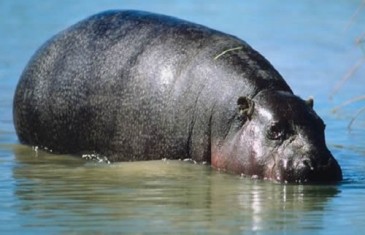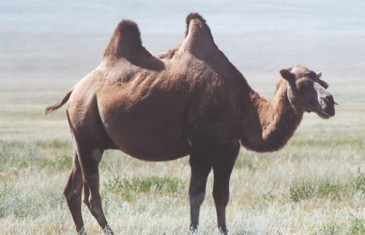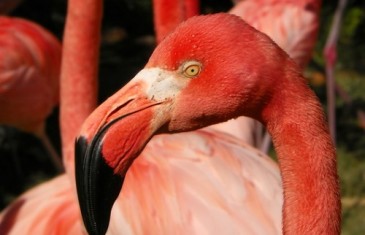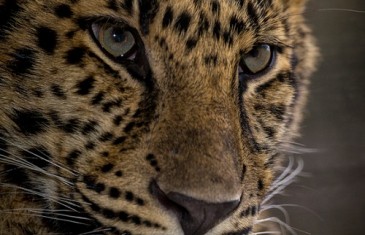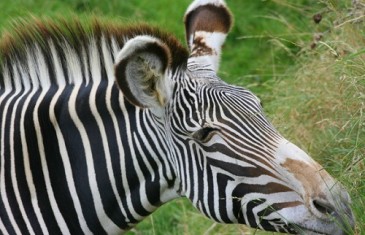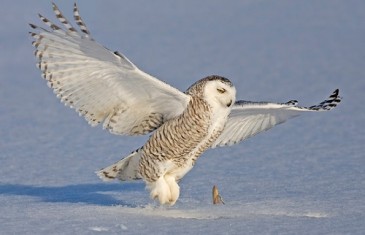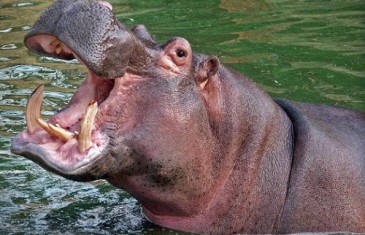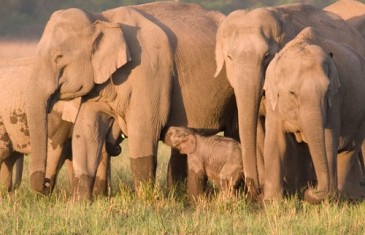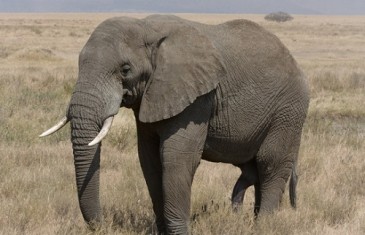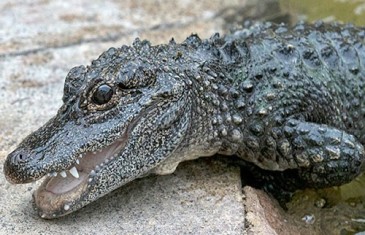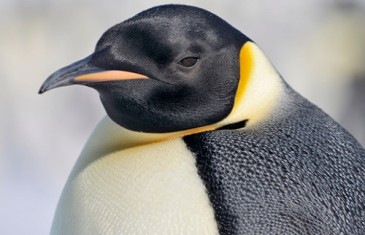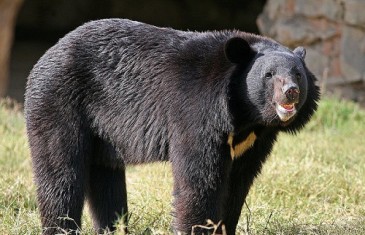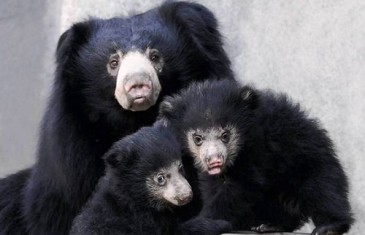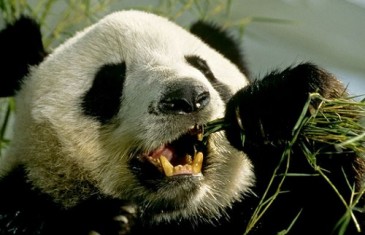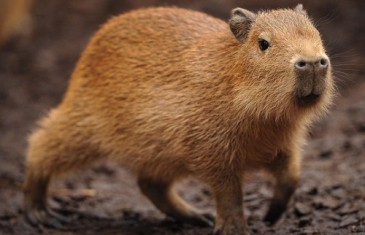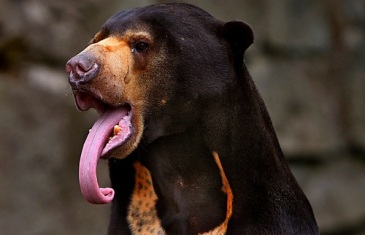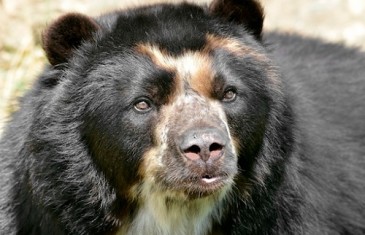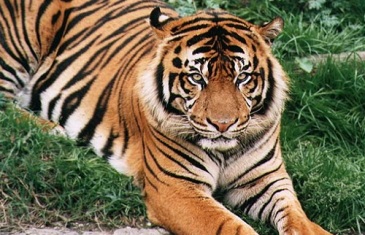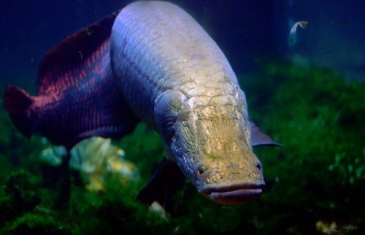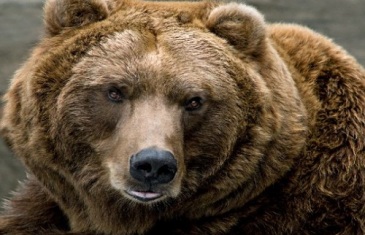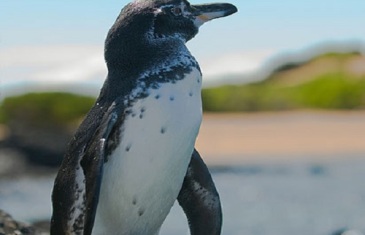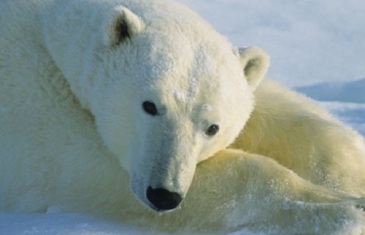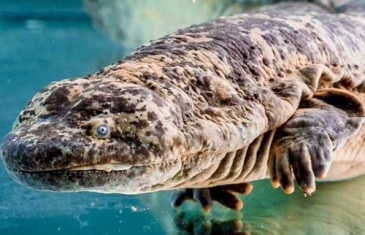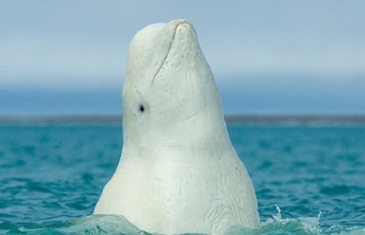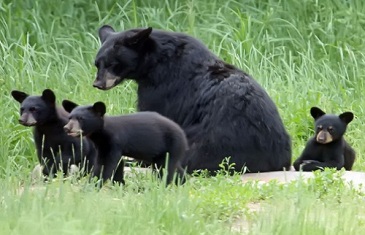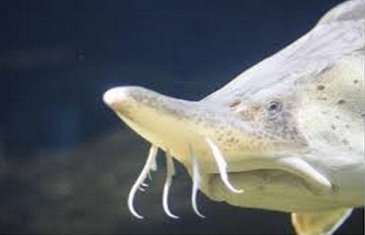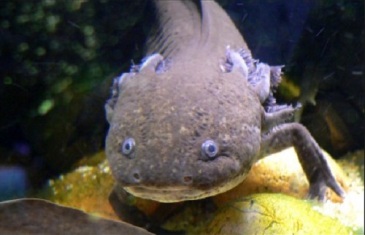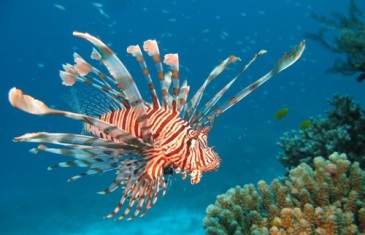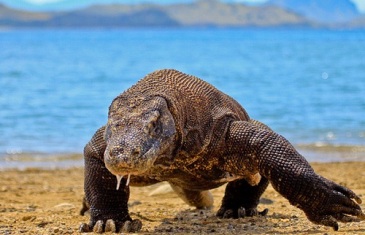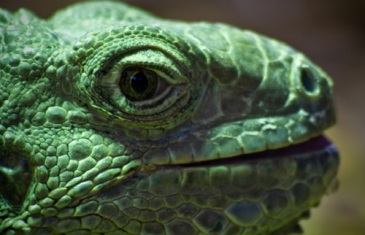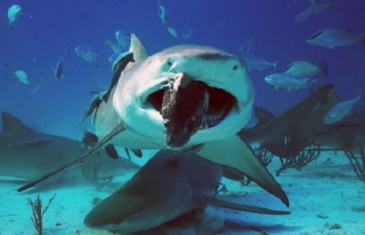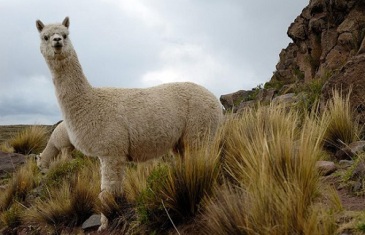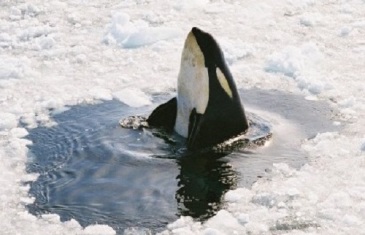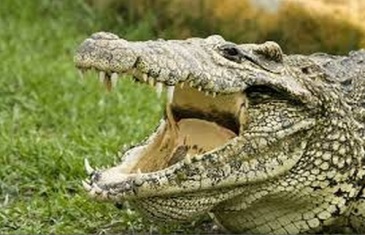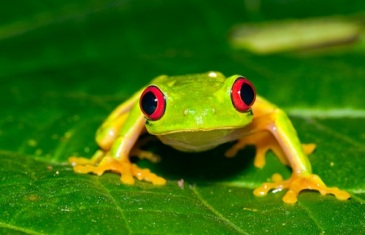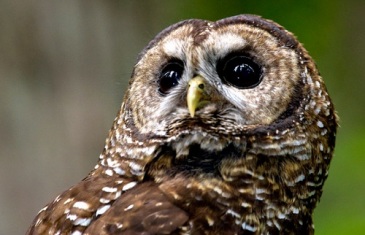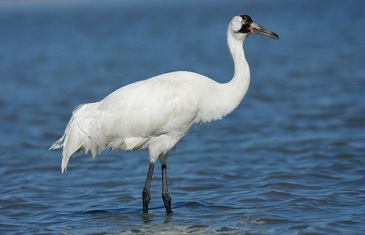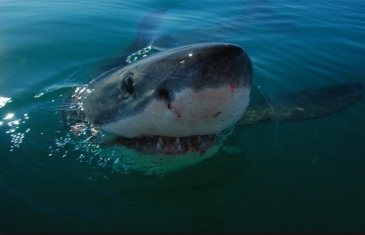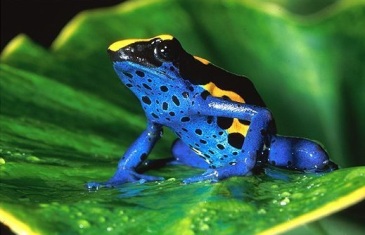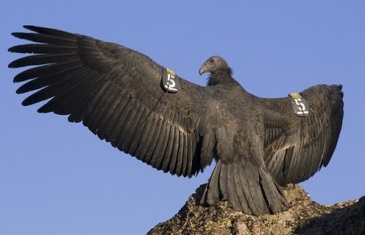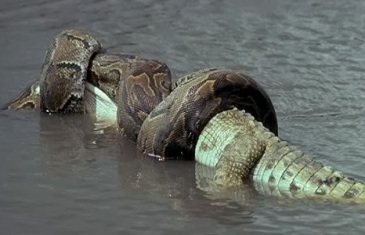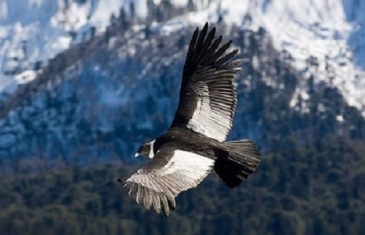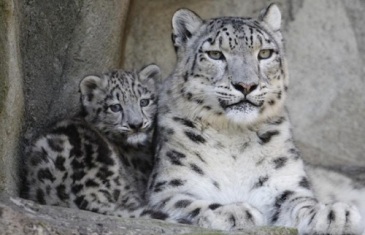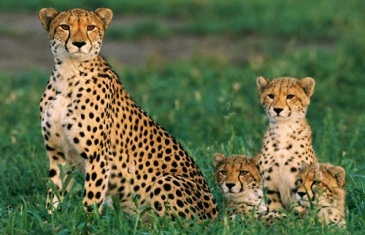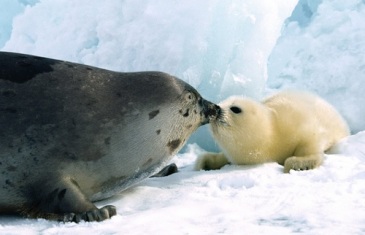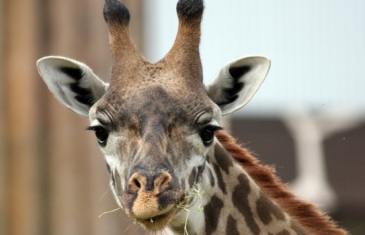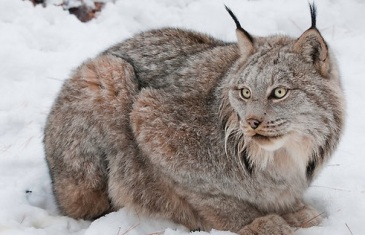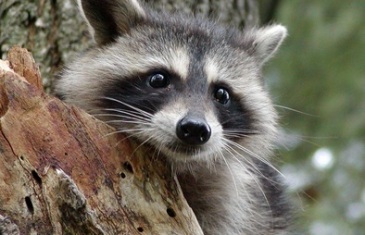o Interesting facts Of the 9 species of fur seals in the world’s oceans only the Northern fur seal lives in the northern hemisphere. Northern fur seals are more closely related to sea lions than to true seals, both have external earflaps, which true seals lack. They also have the ability to walk on all […]
Read moreDid you know? There are only 3 Northern white rhinos left in the world. They live in a private sanctuary in Kenya. One of them is a male and two are female. Neither female is capable of natural reproduction. There are two subspecies of the White Rhino; the Northern white rhino which is and extinct […]
Read moreKingdom Phylum Class Order Family Genus Species Animalia Chordata Aves Sphenisciformes Spheniscidae Spheniscus Speniscus humboldti Did you know? Humboldt penguins are named after the Humboldt current, a nutrient rich current of cold water current that runs along the coast of South America from northern Peru to the south of Chile. Conservation Status The Humboldt penguin […]
Read moreName Scientific Name: Platinista gangetica. Common Name: South Asian River Dolphin, Blind River Dolphin, Ganges Susu (Ganges River Dolphin subspecies), Bhulan (Indus River Dolphin subspecies). Conservation Status The South Asian River Dolphin is listed as Endangered by the Internation Union for the Conservation of Nature. It is listed under Appendix I of the Convention on International […]
Read moreInteresting Facts The last common ancestor of today’s apes and humans lived about 18 million years ago. Humans and Pan (chimps and bonobos) diverged 5 to 8 million years ago. One explanation for the genetic separation between bonobos and is the formation of the Congo River about 1.5 million years ago which divided the population preventing […]
Read moreInteresting Facts Genetic studies show that chimpanzees and humans share a common ancestor and 98% of genes. Because we are so similar chimpanzees get many infectious diseases that humans get. Chimps belong to the group of greater apes along with gorillas, bonobos and . They are stronger than humans because of the way neurons activate […]
Read moreInteresting Facts The Hawsksbill Sea Turtle is the most endangered of all the turtle species. Its population has declined over 80% in a century. One of the most important reasons for the global decline of the Hawksbill Sea Turtle has been the high demand for its richly patterned shell. It is used in a variety […]
Read moreInteresting Facts Electric eels are not true eels but they have a strong resemblance to true eels (Anguilliformes). They are Gymnotiformes commonly known as South American knifefish or neotropical fish. These fish can produce up to 650 volts of electricity enough to severely injure humans and other animals. Male electric eels make a nest with […]
Read moreo o Interesting Facts The Andean Titi Monkey belongs to the genus Callicebus. There are 30 species of titis that belong to this genus. The Andean Titi is locally known as “mono tocon” or in the native Awajun language as the “sugkamat”. Their tails are longer than their bodies. Name Scientific Name: Callicebus oenanthe Common Name: San Martin […]
Read moreTaxonomy Kingdom Phylum Class Order Family Genus Species Animalia Chordata Mammalia Artiodactyla Monodontidae Monodon Monodon monoceros Interesting facts During winter sometimes narwhals get trapped under fast forming pack ice. They attempt to keep the breathing hole open with their tusks but die of exhaustion and suffocation unable to breathe. Tusks are overgrown teeth. […]
Read more0 Conservation Status Walruses have been part of the culture of many indigenous Arctic cultures for thousands of years. They have hunted them for their meat, skin, blubber, tusks and bones. During the 19th and early 20th century its population was rapidly depleted. The Pacific species has rebounded since then but the Atlantic and Laptev […]
Read moreInteresting Facts A calf born in the Cincinnati Zoo in Ohio was the first Sumatran Rhinoceros born in captivity in over 100 years. There are fewer than 250 Sumatran Rhinoceros in the wild, they are so endangered that they are one of the rarest large mammals in the world. There are five types of rhinoceros: […]
Read moreInteresting Facts Tokyo Tsukiji Market is the largest wholesale market of Southern blue fish tuna. In 2013 a 222 kl tuna was sold for $1.8 million or $8,000 a kilogram. This species was previously considered as a subspecies of the or the Recreational and game fishers of Southern Bluefin Tuna is allowed in Australia and […]
Read moreInteresting Facts There are three types of bluefin tuna: Pacific, Atlantic and Southern. Tokyo Tsukiji Market is the largest wholesale market of bluefin tuna. In 2013 a 222 kl tuna was sold for $1.8 million or $8,000 a kilogram (2.2 lb). About 80% of the Atlantic and Pacific Bluefin Tuna is consumed in Japan. As […]
Read more0 o Name Common name: Atlantic Bluefin Tuna Scientific name: Thunnus thynnus Population and Conservation Status The Atlantic Bluefin Tuna is a highly valuable species in the Japanese sashimi market which has been overfished across its range. According to the IUCN as of 2010 there has been a decline of up to 51% over the past […]
Read moreInteresting Facts The two species of orangutan, Sumatran Orangutan (pongo abelii) and Borneo Orangutan (pongo pygmaeus), genetically diverged about 1.5 million years ago. Orangutans have 32 teeth, the same amount as humans. It is believed that humans and apes had a common ancestor 15 million years ago. They share 97% of their DNA with humans. Orangutans are […]
Read moreBlue Whale are the largest animals to have ever existed on earth, due to its size there are no Blue Whales in captivity. These animals are also the loudest animals on earth. During the 20th century the species was almost exterminated due to commercial whaling. Blue Whales can be found in all major oceans of […]
Read moreInteresting Facts about Gorillas Gorillas develop twice as fast as humans. Gorillas share 95% of our human genome. A group of gorillas is called troop. The Western Lowland Gorilla is the subspecies that is often found in zoos. American zoologist George B. Schaller was the first scientist to study and observe gorillas. He published […]
Read moreKingdom Phylum Class Order Family Genus Species Animalia Chordata Mammalia Perissodactyla Rhinocerotidae Diceros D. bicornis o o Conservation The IUCN Red List of Threatened Species lists the Black Rhino as Critically Endangered. The species is listed on CITES Appendix I. International trade in Black Rhinos and their products is prohibited. Fun Facts about Rhinos […]
Read moreInteresting Facts about Gorillas Gorillas are our closest relatives. They share 98% of our genome. American zoologist George B. Schaller was the first scientist to study and observed gorillas. He published his findings in his book “The Mountain Gorilla: Ecology and Behavior” Taxonomy Kingdom: Animalia Phylum: Chordata Class: Mammalia Order Primates Suborder: Haplorhini Family: […]
Read morePopulation and Conservation Status The South China Tiger is the most critically endangered species of tiger in the world. There are about two dozen in world in reserves in China and South Africa. According to the International Union for the Conservation of Nature this subspecies may be functionally extinct as it has not been observed […]
Read moreAn adult bald eagle, young ones do not have white plumage in the head and tail. o o Cool facts about the bald eagle The Bald Eagle has been the national emblem of the United States since 1782. Benjamin Franklin did not approve of the bald eagle as the US emblem. He thought it […]
Read moreo o Name Scientific name: Phocoena sinus Common name: Vaquita, Gulf Porpoise, Gulf of California Porpoise. Vaquita is for “little cow” in Spanish. Conservation Status The vaquita is the most endangered cetacean after the was declared functionally extinct in 2006. Phocoena sinus is listed as Critically Endangered by the IUCN Red List of Threatened Species. […]
Read moreo o Name Scientific name: Megaptera novaenanglia. Megaptera is derived from the Greek mega for “large” and pteron for “wing”. Novaeangliae for New England where the humpback was first described scientifically. Common name: Humpback whale, hump whale, hunchbacked whale. Conservation Status The humpback whale is listed as Least Concern by the IUCN. Its status was […]
Read moreName Common name: Sperm Whale, Spermacet Whale, Cachelot, Pot Whale. “Spermaceti”, the organ in the head of the whale which contains an oily liquid once believed to be sperm. Scientific name: Physeter macrocephalus. Physeter is derived from the Greek word for “blowpipe or blowhole” Macrocephalus is derived from Greek meaning “big head”. Conservation Status […]
Read moreo o Name Common name: Leatherback, Leatherback Sea Turtle, Leathery Turtle, Trunkback Turtle, Coffinback, Luth. Scientific name: Dermochelys coriacea Conservation Status by Subpopulations East Pacific Ocean subpopulation: Critically Endangered. Nesting females and nests declined by 97.4% during the past three generations. Northeast Indian Ocean subpopulation: Data Deficient. There is insufficient reliable trend data of […]
Read moreo o Name Common name: Baiji, Yangtze River Dolphin, Chinese river dolphin, white-fin dolphin, white-flag dolphin. Scientific name: Lipotes vexillifer. Population The total population in the early 1990s was believed to be less than 100 individuals in the wild. The last documented sighting was in 2002. In 2006 an acoustic and visual survey failed […]
Read moreTaxonomy Kingdom: Animalia Phyllum: Chordata Class: Mammalia Order: Sirenia Family: Trichechidae Genus: Trichechus Species: Trichechus inunguis o o Name Common name: Amazonian manatee, South American manatee, Amazon sea cow. Scientific name: Trichechus inunguis. Physical Features The Amazonian manatee is the smallest of the three living species of the Trichechus genus, the West Indian manatee […]
Read moreName Common name: Amazon River dolphin, pink dolphin, boto, bufeo. The name originates from the Greek delphus meaning “womb”. It can be interpreted as “fish” with a “womb”. Scientific name: Inia geoffrensis. Inia derives from the Guarayos tribe in Bolivia. Taxonomy Kingdom: Animalia Phylum: Chordata Class: Mammalia Order: Cetacea Family: Iniidae Genus: Inia Species: Inia geoffrensis […]
Read moreName Common name: Giant otter, giant Brazilian otter, giant river otter. Scientific name: Pteronura brasiliensis Population The IUCN Otter Specialist Group estimates a total wild population of 1,000 to 5,000 individuals and an estimated decrease in population of 50% over the next 20 years. Taxonomy Kingdom: Animalia Phylum: Chordata Class: Mammalia Order: Carnivora Family: Musteliadae Subfamily: […]
Read moreTaxonomy Kingdom: Animal Phylum: Chordata Class: Mammalia Order: Artiodactyla Family: Hippopotamidae Genus: Choeropsis Species: Choeropsis liberiensis o o 0 Population The IUCN estimates a population of less than 3,000 individuals with a projected decline of 20% over the next 20 years. Name Scientific name: Hexaprotodon liberiensis or Choeropsis liberiensis. Choeropsis from the Greek “having the […]
Read morePopulation According to the IUCN as of 2004 there were 600 wild Bactrian camels in China and 350 in Mongolia. Population trend is decreasing. Name Scientific name: Camelus ferus. Camelus from the Latin camelus and the Greek Kamelos for “camel”. Ferus from the Greek word ferus meaning “savage” or “wild”. Common name: Mongolian wild camel, wild […]
Read moreo o Population and Conservation Status Chilean flamingo (Phoenicopterus chilensis) – Near Threatened. The Chilean flamingo breeds erratically and irregularly. The IUCN estimates a total population of 300,000 individuals. Caribbean flamingo (Phoenicopterus ruber ruber) – Least Concern. This species has a large range with an increasing population. Lesser flamingo (Phoeniconaias minor) – Near Threatened. Decreasing […]
Read moreTaxonomy Kingdom Phylum Class Order Family Genus Species Animalia Chordata Mammalia Carnivora Felidae Panthera Panthera pardus o o Name Scientific name: Panthera pardus. Panthera is derived from the Latin word panthera or the Greek word panther meaning “panther, leopard”. Pardus is derived from the Latin pardus or from the Greek pardos meaning “male panther”. Common […]
Read moreName Scientific name: Equus grevyi. The word equus is from the Latin word for “horse”. This species was named Grevyi after Jules Grèvy, president of the Third Republic of France in the late 18th century who was given one of these zebras as a gift in 1882. Common name: Grevy’s zebra, Imperial zebra. The word […]
Read moreConservation Status The snowy owl (Bobus scandiacus) has a wide distribution and healthy population numbers, though its trend is declining. According to the IUCN its global population is estimated at more than 300,000 individuals. It does not meet the criteria for Vulnerable and it is listed as Least Concern by the IUCN Red List of Endangered […]
Read moreTaxonomy Kingdom: Animalia Phylum: Chordata Class: Mammalia Order: Carnivora Family: Mustelidae Genus: Enhyndra Species: Enhyndra lutris o o Name Common name: Sea otter. Scientific name: Enhyndra lutris. Enhiyndra comes from the Ancient Greek word for “water” and lutris from the Latin word for “otter”. Habitat Sea otters live in coastal areas, primarily in the ocean but they […]
Read moreTaxonomy Kingdom: Animalia Phylum: Chordata Class: Mammalia Order: Artiodactyla Family: Hippopotamidae Genus: Hippopotamus Species: Hippopotamus amphibious 0 0 Name Common name: Common hippopotamus, river hippopotamus, Nile Hippopotamus, large hippo. Scientific name: Hippopotamus amphibious. Hippos from the Greek word “horse”, potamos from the Greek “river or rushing water”. Physical Features The common or river hippopotamus is […]
Read moreTaxonomy Kingdom Phylum Class Order Family Genus Species Animalia Chordata Reptilia Testudines Testudinidae Chelonoidis Chelonoidis nigra 0 0 Name Common name: Galapagos tortoise, giant Galapagos tortoise. The word tortoise is usually used for terrestrial turtles in the family Testudinidae. Scientific name: Chelonoidis nigra Physical Features Galapagos tortoises are the only surviving lineage of giant turtles […]
Read moreo o Conservation Status The Asian elephant is listed under Appendix I of CITES. The Asian elephant is listed as “endangered’ in the IUCN Red List of Threatened Species. Its population has declined by more than 50% over the last 45 years. The subspecies Sumatran elephant (Elephas maximus sumatranus) is listed as “critically endangered”. It […]
Read moreName Common name: African Scientific name: Loxodonta africana Physical Features African elephants are the largest and heaviest on earth. They have larger ears than the and they are shaped like the continent of Africa. Each ear can measure 4 ft or 1.2 m across. Their large ears are used to control their body temperature. They […]
Read moreTaxonomy Kingdom Phylum Class Order Family Genera Animalia Chordata Mammal Proboscidea Elephantidae Loxodonta Elephas 0 0 Distribution and Habitat There are two subspecies of elephants: and Asian elephant (Eliphas maximus). are distributed throughout sub-Saharan Africa and found in 37 countries. Asian elephants are found throughout South Asia and Southeast Asia. Elephants need a vast habitat […]
Read moreTaxonomy Kingdom Phylum Class Order Family Genus Species Animalia Chordata Reptilia Crocodilia Alligatoridae Alligator Alligator sinensis o o Name Common name: Chinese alligator, China alligator, Yangtze alligator. Scientific name: Alligator sinensis. Distribution and Habitat The Chinese alligator is one of two species of alligators found in the world, the other one is the American […]
Read moreTaxonomy Kingdom: Animalia Phylum: Chordata Class: Aves Order: Sphenisciformes Family: Spheniscidae Genus: Aptenodytes Species: Aptenodytes forsteri Name Common name: Emperor penguin. Scientific name: Aptenodytes forsteri o o Distribution and Habitat Emperor penguins live in the waters of the Antarctic, the continental shelf, fast ice and surrounding islands. Its distribution is limited to the area between 66˚ […]
Read moreTaxonomy Kingdom Phylum Class Order Family Genus Species Animalia Chordata Mammalia Carnivora Ursidae Ursus Ursus thibetanus 0 0 Name Common Name: Asiatic black bear, Asian black bear, Himalayan Black bear, Tibetan black bear, moon bear. Scientific Name: Ursus thibetanus Distribution and Habitat The Asiatic black bear has a wide distribution. Its range covers southeastern Iran, […]
Read moreTaxonomy Kingdom Phylum Class Order Family Genus Species Animalia Chordata Mammalia Carnivora Ursidae Melursus Melursus ursinus 0 0 Name Common name: Sloth bear. Scientific name: Melursus ursinus Sloth bears are not related to sloths. George Shaw, a European zoologist, believed they were related. He named this species for features they share with tree sloths such […]
Read moreTaxonomy Kingdom: Animalia Phylum: Chordata Class: Mammalia Order: Carnivora Family: Ursidae Genus: Ailuropoda Species: o o Name Common name: Giant panda, panda bear, panda. Scientific Name: Ailuropoda melanoleuca Distribution and Habitat Historically the giant panda occupied most of southern and eastern China. Today its distribution has been reduced by 92% from its original range. Currently […]
Read moreTaxonomy Kingdon: Animalia Phylum: Chordata Class: Mammalia Order: Rodentia Family: Caviidae Genus: Hydrochoerus Species: Hydrochoerus hydrochaeris Name Common Name: Capybara Scientific Name: Hydrochoerus hydrochaeris o o Distribution and Habitat Capybaras are distributed throughout the basins of the Orinoco, Amazon, San Francisco and La Plata Rivers. Water and temperature are the main factors in its distribution. […]
Read moreTaxonomy Kingdom: Animalia Phyllum: Chordata Class: Mammalia Order: Carnivora Family: Ursidae Genus: Helarctos Species: Helarctos malayanus oName Scientific name: Helarctos malayanus. Common name: Honey bear, sun bear. Named for its distinctive sun like colored chest patch. Distribution and Habitat Its range covers the countries of Bangladesh, Brunei, Cambodia, China, India, Indonesia, Laos, Malaysia, […]
Read moreTaxonomy Kingdom: Animalia Phylum: Chordata Class: Mammalia Order: Carnivora Family: Ursidae Genus: Tremarctos Species: Tremarctos ornatus . . Name Scientific name: Tremarctos ornatus Common name: Spectacled bear, Andean bear, jukumari (Aymara), ukumari (Quechua), Ukuku. Distribution and Habitat The spectacled bear is the only surviving bear species endemic to South America. Its distribution is concentrated in […]
Read moreTaxonomy Kingdom Phylum Class Order Family Genus Species Animalia Chordata Mammalia Carnivora Felidae Panthera Panthera tigris 0 0 Name Scientific name: Panthera tigris. Common name: Tiger. Distribution There are 8 recognized subspecies of tigers living in 13 Asian countries: India, Nepal, Bangladesh, Bhutan, Myanmar, China, Cambodia, Laos, Myanmar, Malaysia, Vietnam, Russia and North Korea. […]
Read more0 Taxonomy Kingdom: Animalia Phylum: Chordata Class: Actinopterygii Order: Osteoglossiformes Family: Arapaimidae Genus: Arapaima Species: Arapaima gigas 0 Name Scientific name: Arapaima Common name: Pirarucu in Brazil, paiche in Peru. Physical Features The arapaima is the largest freshwater fish. They have a large and wide mouth with a toothed tongue which is a characteristic of […]
Read moreTaxonomy 0 Kingdom Phylum Class Order Family Genus Species Animalia Chordata Mammalia Carnivora Ursidae Ursus Ursus arctos 0 Name Common name: Brown bear, grizzly, grizzly bear. Scientific name: Ursus arctos. Distribution The brown bear has a circumpolar distribution historically covering most of North America, northern Asia, Europe, the Atlas Mountains of North Africa […]
Read more0 Taxonomy Kingdom: Animalia Phylum: Chordata Class: Aves Order: Sphenisciformes Family: Spheniscidae Genus: Spheniscus Species: Spheniscus mendiculus 0 Name Scientific name: Spheniscus mendiculus. Common name: Galapagos penguin. Distribution and Habitat Galapagos penguins live in the northernmost habitat of all penguin species. They are the only species to live and breed in tropical climate. They are […]
Read moreTaxonomy Kingdom Phylum Class Order Family Genus Species Animalia Chordata Mammalia Carnivora Ursidae Ursus Ursus maritimus 0 0 Name Scientific name: Ursus maritimus Common name: White bear, ice bear, polar bear. Distribution and Habitat The polar bear is distributed throughout the Arctic Circle and surrounding areas. Their range is limited by the extent of sea […]
Read moreTaxonomy Kingdom Phylum Class Order Family Genus Species Animalia Chordata Amphibia Caudata Cryptobranchidae Andrias Andrias davidianus , There are 3 species of the Cryptobranchidae family: Chinese giant salamander, Japanese giant salamander and North America Hellbender. Name Common name: Chinese giant salamander. Scientific name: Andrias davidianus. Distribution and Habitat The Chinese giant salamander is an amphibian […]
Read moreTaxonomy Kingdon: Animalia Phylum: Chordata Class: Mammalia Order: Cetacea Family: Monodontidae Genus: Delphinapterus Species: Delphinapterus leucas Name Common name: White whale, beluga whale. Its name comes from the Russian world “beloye” meaning white. Scientific name: Delphinapterus leucas. Delphinapterus means dolphin without a wing – or dorsal fin. Habitat and Distribution Beluga whales are widely […]
Read moreTaxonomy Kingdom Phylum Class Order Family Genus Species Animalia Chordata Mammalia Carnivora Ursidae Ursus Ursus Americanus 0 0 Name Scientific name: Ursus Americanus. Common name: American black bear, Olympic black bear. Physical Features The black bear is the smallest of the North American bears. The other North American bears are the and the They have […]
Read more0 Taxonomy Kingdom: Animalia Phylum: Chordata Class: Actinoptergii Order: Acipenseridae Genus: Huso Species: Huso huso Name Scientific name: Huso huso. Common name: Beluga sturgeon, great sturgeon, giant sturgeon, European sturgeon. 0 Habitat and Distribution The Beluga sturgeon is native to the Black, Caspian, Azov and Adriatic Seas. Historically they have spawn in the Danube, […]
Read more0 Taxonomy Kingdom: Animalia Phylum: Chordata Class: Amphibia Order: Caudata Family: Ambystomatidae Genus: Ambystoma Species: Ambystoma mexicanum Name Scientific name: Ambystoma mexicanum Common name: Axolotl, Mexican salamander, Mexican walking fish, Ajolote. 0 Distribution and Habitat The axolotl is an amphibian native to central Mexico specifically to the high altitude, fresh water lakes Xochimilco and Chalco […]
Read moreThe red lionfish (Pterois volitans) belongs to the pteroinae genus which has 10 species of lionfish. Two of them, Pterois volitans and Pterois miles, are invasive species in the North West Atlantic Ocean and the Caribbean. Of the two species Pterois volitans makes up 90% of the total. 0 Taxonomy Kingdom: Animalia Phylum: Chordata Class: Actinopterygii […]
Read moreTaxonomy Kingdom Phylum Class Order Family Genus Species Animalia Chordata Reptilia Squamata Varanidae Varanus Varanus komodoensis , . A Komodo dragon in the Komodo National Park in Indonesia. Name Scientific name: Varanus komodoensis Common name: Komodo dragon, land crocodile. Habitat and Distribution Komodo dragons are native to the archipelago of Indonesia to the islands of […]
Read moreTaxonomy Kingdom Phylum Class Order Family Genus Species Animalia Chordata Reptilia Squamata Iguanidae Iguana Iguana Iguana 0 0 Name Scientific name: Iguana iguana Common name: Green iguana, common iguana. Habitat and Distribution The green iguana is a species of lizard native to the tropical rainforests of South America and Central America. Its native range […]
Read more0 Taxonomy Kingdom: Animalia Phylum: Chordata Class: Chondrichthyes Order: Carcharhiniformes Family: Carcharhinidae Genus: Negaprion Species: Negaprion brevirostris 0 Name Scientific Name: Negaprion brevirostris. Common Name: Lemon shark. Distribution and Habitat They inhabit the coastal inshore waters of the northwest Atlantic Ocean from the coast of the state of New Jersey to Southern Brazil, the Caribbean […]
Read moreTaxonomy Kingdom Phylum Class Order Family Genus Species Animalia Chordata Mammalia Artiodactyla Camelidae Vicugna Vicugna pacos 0 Name: Scientific Name: Vicugna pacos Common Name: Alpaca Habitat and Distribution The alpaca is a camelid indigenous to the Andes Mountains of Peru, Bolivia, Ecuador and Chile. Other camelids closely related to the alpaca are llama, guanaco […]
Read more0 Name Scientific name: Orcinus orca Common name: Orca whale, killer whale. Taxonomy Kingdom: Animalia Phylum: Chordata Class: Mammalia Order: Cetacea Suborder: Odontoceti Family: Delphinidae Genus: Orcinus Species: Orcinus orca 0 Physical Features The orca whale is the largest member of the dolphin family. They have large black body with white belly and a grey […]
Read moreTaxonomy Family Phylum Class Order Family Genus Species Animalia Chordata Reptilia Crocodylia Crocodylidae Crocodylus Crocodylus rhombifer . Cuban crocodile in Hoyerswerda Zoo in Saxony, Germany Name Scientific name: Crocodylus rhombifer Common name: Cuban crocodile Physical Features The Cuban crocodile have powerful legs that give them the ability to jump. They are able to leap from […]
Read moreKingdom Phylum Class Order Family Genus Species Animalia Chordata Amphibia Anura Hylidae Agalychnis Agalychnis callidryas 0 0 Name Scientific name: Agalychnis callidryas. Common Name: Red eyed tree frog or Red eyed leaf frog. Range and Habitat The red eyed tree frog, also known as red eyed leaf frog, is an amphibian native to Central American countries, […]
Read moreTaxonomy Kingdom Phylum Class Order Family Genus Subspecies Animalia Chordata Aves Strigiformesa Strigidae Strix occidentalis Strix occidentalis caurina 0 0 Name Scientific name: Strix occidentalis caurina. Common name: Northern spotted owl. Habitat and Distribution The northern spotted owl is one of the three species of spotted owls, the other two are the California and the […]
Read more0 Taxonomy Kingdom: Animalia Phylum: Chordata Class: Aves Order: Gruiformes Family: Gruidae Genus: Grus Species: Grus Americana 0 Physical Features The whooping crane has snow white body feathers with black wingtips that can be seen when flying. The face has a black mask around the beak which is long and pointed so that it can […]
Read more0 Taxonomy Kingdom: Animalia Phylum: Chordata Class: Chondrichthyes Order: Lamniformes Family: Lamnidae Genus: Carcharodon Species: Carcharodon carcharias Name Common name: Great white shark, white shark, white pointer or great white. Scientific name: Carcharodon carcharias. 0 Physical Features The white shark has a dorsal fin on top of its body, two pectoral fins at the bottom […]
Read moreWhat is in a name? Local Amerindians in the Amazon rainforest used toxins from the skin of these frogs to poison the tips of their blow darts, therefore the name poison dart frog. Taxonomy Kingdon: Animalia Phylum: Chordata Class: Amphibia Order Anura Suborder: Neobatrachia Family: Dendrobatidae 0 Physical Features Poison dart frogs have bright colorful […]
Read moreTaxonomy Kingdom: Animalia Phylum: Chordata Class: Aves Order: Cathatiformes Family: Cathartidae Genus: Gymnopyps Species: Gymnogyps californianus Name Scientific name: Gymnogyps californianus. Common name: California condor. 0 Physical Features The plumage of the California condor is black with white patches of white feathers on the underside of their wings. These patches are visible when flying. Like their […]
Read more0 Taxonomy Family: Animalia Phylum: Chordata Class: Reptilia Order: Testudines Family: Cheloniidae Genus: Chelonia Species: Chelonia mydas 0 Name Scientific name: Chelonia mydas Common name: Green turtle, green sea turtle, black sea turtle. Habitat and Distribution Its habitat extends throughout tropical and subtropical seas. They stay along the coast and islands between 30 degrees north and […]
Read moreTaxonomy Kingdom: Animalia Phulum: Chordata Class: Reptilia Order: Squamata Suborder: Serpentes Family: Boidae Genus: Eunectes Species: Eunectes murinus 0 0 Name Common name: Green anaconda. Scientific name: Eunectes murinus 0 Habitat and Distribution The green anaconda is a non-venomous boa species found in South America. It is also known as the common anaconda or water boa because […]
Read more0 Taxonomy Kingdom: Animalia Phylum: Chordata Class: Aves Order: Cathartiformes Family: Cathartidae Genus: Vultur Species: Vultur gryphus Name Common name: Andean condor. Scientific name: Vultur gryphus 0 Habitat and Distribution The Andean Condor (Vultus gryphus) is one of the 7 species of New World vultures found in warm and temperate areas of the American continent. The […]
Read more0 Taxonomy Kingdom: Animalia Phylum: Chordata Class: Мammalia Order: Carnivora Family: Felidae Subfamily: Pantherinae Genus: Panthera Species: Panthera Uncia 0 Physical Features Despite their name, snow leopards (Panthera Uncia) are not the color of the snow. Their fur color varies from smoky gray to yellowish brown with black spots and rosettes. They stand out against […]
Read more0 Taxonomy Kingdom: Animalia Phylum: Chordata Class: Mammalia Order: Carnivora Family: Felidae Genus: Acinonyx Species: Acinonyx Jubatus 0 Name Common name: Cheetah, hunting leopard. Scientific name: Acinonyx Jubatus. Physical Features Cheetahs have coarse short tan fur with black one inch black spots that serve as camouflage. They are distinguished from other big cats by their smaller size, spotted […]
Read moreTaxonomy Kingdom: Animalia Phylum: Chordata Class: Mammalia Order: Carnivora Family: Phociadae Genus: Pagophilus Species: Pagophilus Groenlandicus 0 0 Name Common name: Harp seal or Greenland seal. Scientific name: Pagophilus Groenlandicus Distribution and Habitat The harp seal (Pagaphilus groenlandicus) is a marine mammal that lives in defined breeding grounds in the Arctic. There are three populations. The […]
Read moreTaxonomy Kingdom: Animalia Phylum: Chordata Class: Mammalia Order: Cetacea Suborder: Odontoceti Family: Delphinidae, Inidae, Lipotidae, Plantanstidae, Pontoporiidae. 0 0 Distribution and Habitat There are 42 species of dolphins found around the world. Of those, 38 are marine dolphins and 4 are river dolphins. Dolphins are found worldwide and thrive in shallow seas where weather is […]
Read more0 Taxonomy Kingdom: Animalia Phylum: Chordata Class: Mammalia Order: Artiodactyla Family: Giraffidae Genus: Giraffa Species: Giraffa camelopardalis Name Common name: Giraffe. The name giraffe comes from the Arabic “zarafa” which means fast walker. Scientific name: Giraffa camelopardalis 0 Distribution and Habitat Their habitat extends from Chad in the north to South Africa in the south and […]
Read moreTaxonomy Kingdom: Animalia Phyum: Chordata Class: Mammalia Order: Carnivora Family: Felidae Genus: Lynx Species: Lynx Canadensis 0 Name Common name: Canadian lynx. Scientific name: Lynx Canadensis Its name comes from the Greek word to “shine”, maybe in reference to their reflective cat eyes. Physical Features The Canadian lynx is a medium size wild cat. Canadian […]
Read more0 Taxonomy Kingdom: Animalia Phylom: Chordata Class: Mammalia Order: Carnivora Family: Procyoniade Genus: Procyon Species: Procyon lotor Name Common name: Raccoon, northern raccoon. Scientific name: Procyon lotor Physical Features Raccoon’s bodies are covered in a thick gray coat. They have an undercoat that accounts for 90% of its entire coat and insulates them from cold weather. […]
Read more0 Taxonomy Kingdom: Animalia Phylum: Chordata Class: Mammalia Infraclass: Marsupialia Order: Diprotodontia Suborder: Vombatiformes Family: Phascolarctidae Genus: Phascolarctos Species: Phascolarctos cinereus 0 Physical Features According to the Department of the Environment of the Australian government there is only one species of Koala with different physical features. Their fur ranges from silver gray to […]
Read more